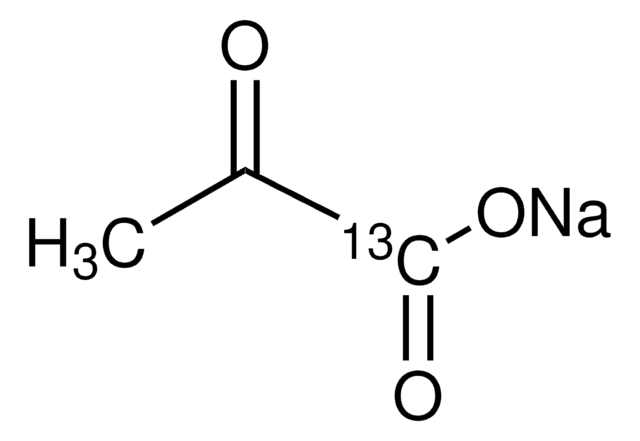80443
Sodium pyruvate
Pharma Manufacturing
Synonym(s):
α-Ketopropionic acid sodium salt, 2-Oxopropanoic acid sodium salt, Pyruvic acid sodium salt
About This Item
Recommended Products
biological source
synthetic
Quality Level
Assay
≥99.5% (HPLC)
form
solid
concentration
≥98 % (w/w) (T)
impurities
sodium, complies
≤0.2% every single impurity (HPLC)
≤0.5% water (Karl Fischer)
≤5000 ppm GC-HS: etahnol
mp
>300 °C (lit.)
solubility
H2O: soluble, clear, colorless (1.5g/25mL)
suitability
corresponds for identity (IR) (ATR)
SMILES string
[Na+].CC(=O)C([O-])=O
InChI
1S/C3H4O3.Na/c1-2(4)3(5)6;/h1H3,(H,5,6);/q;+1/p-1
InChI key
DAEPDZWVDSPTHF-UHFFFAOYSA-M
Looking for similar products? Visit Product Comparison Guide
Signal Word
Warning
Hazard Statements
Precautionary Statements
Hazard Classifications
Eye Irrit. 2 - Skin Sens. 1B
Storage Class Code
11 - Combustible Solids
WGK
WGK 1
Flash Point(F)
Not applicable
Flash Point(C)
Not applicable
Choose from one of the most recent versions:
Already Own This Product?
Find documentation for the products that you have recently purchased in the Document Library.
Customers Also Viewed
Our team of scientists has experience in all areas of research including Life Science, Material Science, Chemical Synthesis, Chromatography, Analytical and many others.
Contact Technical Service




